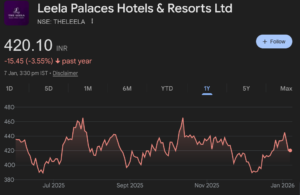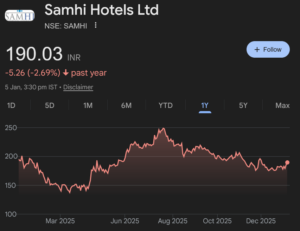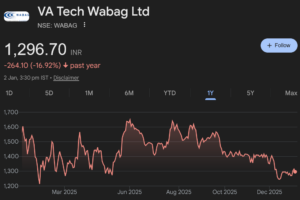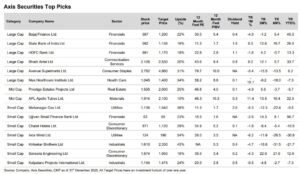By Arbitrageurs
Arbitrageurs stay focused on both cash market and futures markets in order to benefit from unexplained price differences.
Let’s look at the same scrip – RIL; Contract size: 600 shares; Price of Future: 960; Spot Price: 950; Margin Required: 10 per cent of the contract value.
Price in cash market Price in futures market Action Condition Rs 950 Rs 960 Buy in cash market and sell in futures market Basis is more than the cost of carry and opportunity cost of investing
Since the arbitrageur looks for inefficiencies between the prices in the two markets, in the above case, he buys 600 shares of RIL in the cash market and takes delivery of the same. At the same time, he sells 600 shares in the futures market by paying a 10 per cent margin on the contract value. As we have seen earlier, the cash and the futures prices converge on the expiry date and therefore, the arbitrageur would sell the physical shares on the expiry date and buy back the futures, which he had sold. In this transaction, the arbitrageur has made a profit of Rs 6000 (600xl0).
By Hedgers
We explained that a hedger enters the futures market to protect himself from the risk of an adverse price movement. Let’s see how a hedger with assets in the stock market as described in the table below, makes the most of futures.
If the hedger wants to protect his portfolio, which consists of a variety of blue chip stocks, from the possibility of a fall in prices in the market, he may consider selling Nifty futures as this index generally represents the movement of market leaders. In order to completely cover his portfolio value, he will have to purchase 2 Nifty contracts (No. of contracts =Value of portfolio/Nifty value, i.e., 6 lakh/3 lakh).
Since our hedger is bearish about the market for the next one month, he will short sell two contracts of Nifty futures with a maturity period of 1 month each. Let us illustrate the above. If the market falls by 10 per cent, i.e., the value of the Nifty falls by 300 points to 2700, the value of the hedger’s portfolio would be reduced to Rs 5.4lakh (Rs 61akh less 10 per cent), assuming that his portfolio is extremely well represented by the index. At the sametime, since he hassold futures worth Rs 6lakh, he will make a gain of Rs 60,000 due to the fall in the index. As a result, the value of his overall holdings remains unaffected by the fall in the market. However, in the case of a rise in the market, the hedger would lose out on the upside, since he will have to bear losses on account of his short selling of futures contracts. Here,we have assumed a 1:1 ratio between the portfolio and the futures value. Ideally, you
Value of Portfolio Holdings View Action Nifty futures level Value of 1 Nifty contract • Rs6 lakh Bearish for the next one month Sell Index futures 3000 points Rs 3 lakh
would have to take into account the overall volatility of your portfolio and then develop a strategy accordingly. Based on the above data, in case the hedger had decided to sell only one contract and the market rose by 10 per cent, the losses from selling futures would be only Rs 30,000 while the gain in the value of his portfolio would have been Rs 60,000.
If our hedger’s portfolio consisted exclusively of shares of RIL, he could have sold l-month RIL futures that match the quantum of RIL that he holds in his portfolio.
Futures advantages and risks
The existence and the utility of a futures market benefits a lot of market participants
• It allows hedgers to shift risks to speculators.
• It gives traders an efficient idea of what the future price of a stock or value of an index is likely to be.
• Based on the current future price, it helps in determining the future demand and supply of the shares.
• Since it is based on margin trading, it allows small speculators to participate and trade in the futures market by paying a small margin for the purchase of the contract instead of the entire value of physical holdings.
However, you must be aware of the risks involved too. The main risk stems from the temptation to speculate excessively due to a high leverage factor could amplify losses in the same way as it multiplies profits. Further, as derivative products are slightly more complicated than stocks or tracking an Index, lack of knowledge among market participants could lead to losses.
Types of Derivatives – Options
About options
An option contract goes one step beyond a futures contract, towards capping risks. These contracts give you the right but not the obligation to buy or sell shares or an index, at a specified price (strike price or exercise price), on or before a given date in future (expiration date). So, if you have purchased an option contract, you have the right to simply ignore the terms of the contract if the price of the underlying shares or index goes against you. Of course you have to pay a price, called a premium, for this privilege.
On the other side of this transaction, there is an option seller, also called the option writer. This trader gives you the right to buy or sell the underlying asset in exchange for the premium that you pay. He, himself, has no rights and is obligated to comply with the contract if you choose to exercise your option.
Remember that while the term ‘writer of an option’ is used to denote the seller of the option, there are no physical documents that are exchanged between the buyer and the seller of an option. All transactions are merely recorded by the stock exchange through which they are routed.
Lot sizes
The lot sizes in the case of option contracts are the same as those for futures. For instance, if you want to buy an option contract on Reliance Industries Ltd, your underlying asset is a lot of 600 shares of Reliance, just as in the case of futures. Similarly, if you want to purchase one option contract on the Nifty 50, your contract multiplier is 100; the same as it is for a Nifty 50 futures contract.
Expiration dates
The expiration dates for option contracts are also standardized to match those of futures contracts. As in the case of futures contracts, I there are contracts of three durations being traded simultaneously – the near month (1 month), middle month (2 months) and far/distant month (3 months). All these contracts also expire on the last Thursday of their respective contract months, after which the options are worthless. Fresh contracts with a three month duration begin trading the next business day after the last Thursday of each month, after which the 2 month contracts become 1 month contracts and the three month contracts become two month contracts.
Strike Price intervals
Strike price intervals are the various levels of strike prices for each index and stock options. The exchange authorities determine the strike prices. For every option type, the exchanges provide a minimum of five strike prices during the month. Two contracts will be above the spot price (the previous days closing price), two below the spot price and the last one will be equivalent at the spot price. Although the intervals are fixed, the strike prices that are added to the existing ones that are traded keep on changing with the change in spot prices.
American and European Options
When an option can be exercised anytime on or before it reaches its expiry date it is called an American option. Options on stocks in India are American styled and can be exercised anytime during their life. If, on the other hand, an option can be exercised only on the date of expiry and not before, it is called a European option. In India, all index options are European options.
Open Interest
Open interest comprises the total number of outstanding positions in a particular type of contract of all market participants at any given time. In other words, it is the sum of all the net long outstanding positions of all buyers of a particular type of contract.
To explain with an illustration – For every buyer of a contract, there is a corresponding seller. Let us assume that the trader A has bought 100 Nifty futures and trader B is the opposite party. Let us also assume that the brought forward volume is nil in this case and trader A and B are entering the market for the first time. In this case, the open interest would be 100 futures or one contract. Let us assume the price rises on the next day and trader A sells his futures to say trader C. Here, the open interest would not increase since the new position created by trader C would be offset by the reduction of an existing position of trader A. However, in the event of trader A buying another 100 shares from say trader D, who has short sold, the open position would increase by 100 futures or one contract, since none of the parties are offsetting their existing positions.
All open interest would become nil at the expiry date of the contract for the particular series. For instance, open interest in July futures would be nil after the last Thursday of the month of July. However, open interest for the contracts of August and September would still continue till their expiry dates in August and September, respectively.





